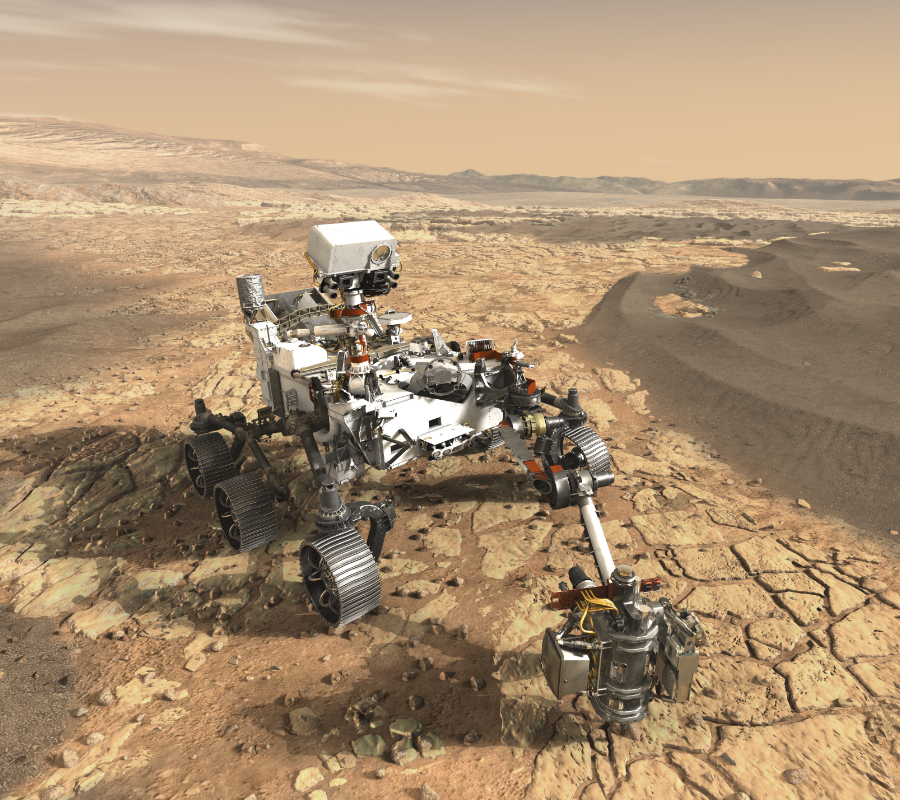Scientists have found evidence that suggests life could once have existed on Mars. The evidence was found by NASA’s Curiosity Rover, which spotted boron in the Gale Crater on the Red Planet.
Boron is an element that allows the development of RNA, which makes it a key ingredient for life. The researchers believe the presence of the element supports the theory that says life once existed on the surface of the planet.

The finding could also support a theory that says life existed on Mars but was forced underground when a disaster turned the planet into a frigid desert. The new study was published online Tuesday in Geophysical Research Letters.
Presence of boron on the Red Planet suggests life could have existed there before
The study was led by Patrick Gasda, a postdoctoral researcher at Los Alamos National Laboratory in Los Alamos, New Mexico.
“Because borates may play an important role in making RNA –one of the building blocks of life—finding boron on Mars further opens the possibility that life could have once arisen on the planet,” said Gasda, according to Popular Mechanics.
Gasda noted that borates could serve as one possible bridge from simple organic molecules to RNA, and added that without RNA, life isn’t possible. Moreover, he said the presence of boron tells them that if organics were present in the Red Planet, those chemical reactions could have occurred.
RNA refers to ribonucleic acid, a nucleic acid found in all modern life which is involved in the expression and decoding of genes from DNA. Researchers say RNA is known to be unstable and decomposes quickly if there’s no boron present.
NASA’s Curiosity Rover made the discovery in December 2016. In the new paper, the researchers describe the rover found the element in calcium sulfate mineral “veins” in the rocky Martian surface. That finding shows boron was present in the Red Planet’s groundwater and indicates the Gale Crater, where the Curiosity Rover is currently stationed, may have been home to some form of life.
Boron has already been found in Martian meteorite
This isn’t the first time boron appears on the Martian surface. In 2013, a group of scientists discovered boron in a meteorite from the Red Planet. However, the discovery in Gale Crater, which NASA scientists have described as a “fascinating place to explore because of the mountain of layered materials in the middle,” marks the first time the RNA-enabler element has been actually found on Mars.

RNA is present in every living thing. Numerous scientists, including the co-discoverer of DNA Francis Crick, have advocated a hypothesis known as an “RNA world,” which says RNA was the initial starting point of life.
The theory says that the original proto-life was made of individual RNA strands that contained genetic information and that could self-replicate. The theory could be applied to Mars because when boron dissolves in water –which scientists believe also existed in the Red Planet long ago—it can stabilize with a sugar called ribose long enough to create RNA, according to Popular Mechanics.
However, those theories still need to be confirmed, and more research is needed to determine whether, in fact, life ever roamed the dusty plains of the Red Planet.
The Mars 2020 rover will continue searching for signs of past life on the planet
The new finding could also support a strange theory that says life originated on Mars and was carried to our planet on an asteroid.

“We can find pieces of Mars here on Earth and we suspect that there pieces of Earth on Mars,” astronomer Caleb Sharf has previously said, according to Fox News. “If that material can carry living organisms on it, it’s possible that we are Martian.”
The finding of boron on Martian surface is one of the several recent discoveries related to the composition of Martian rocks. The Curiosity Rover is climbing a layered Martian mountain to find chemical evidence of how ancient lakes and wet underground environments evolved billions of years ago, in manners that affected their potential for the development of microbial life.
The rover will continue exploring the Gale Crater in the search for elements. The Curiosity Rover landed on Mars’ Gale Crater in 2012 to assess whether the area offered a habitable environment, which has since been confirmed. Another rover will be sent to the Red Planet in three years.
The Mars 2020 rover will carry an instrument known as the “SuperCam,” developed by scientists at Los Alamos, as well as a tool called SHERLOC, which was designed and built by NASA’s Jet Propulsion Laboratory with significant participation by Los Alamos. Both instruments will search for signs of past life on Mars.
Source: Popular Mechanics
